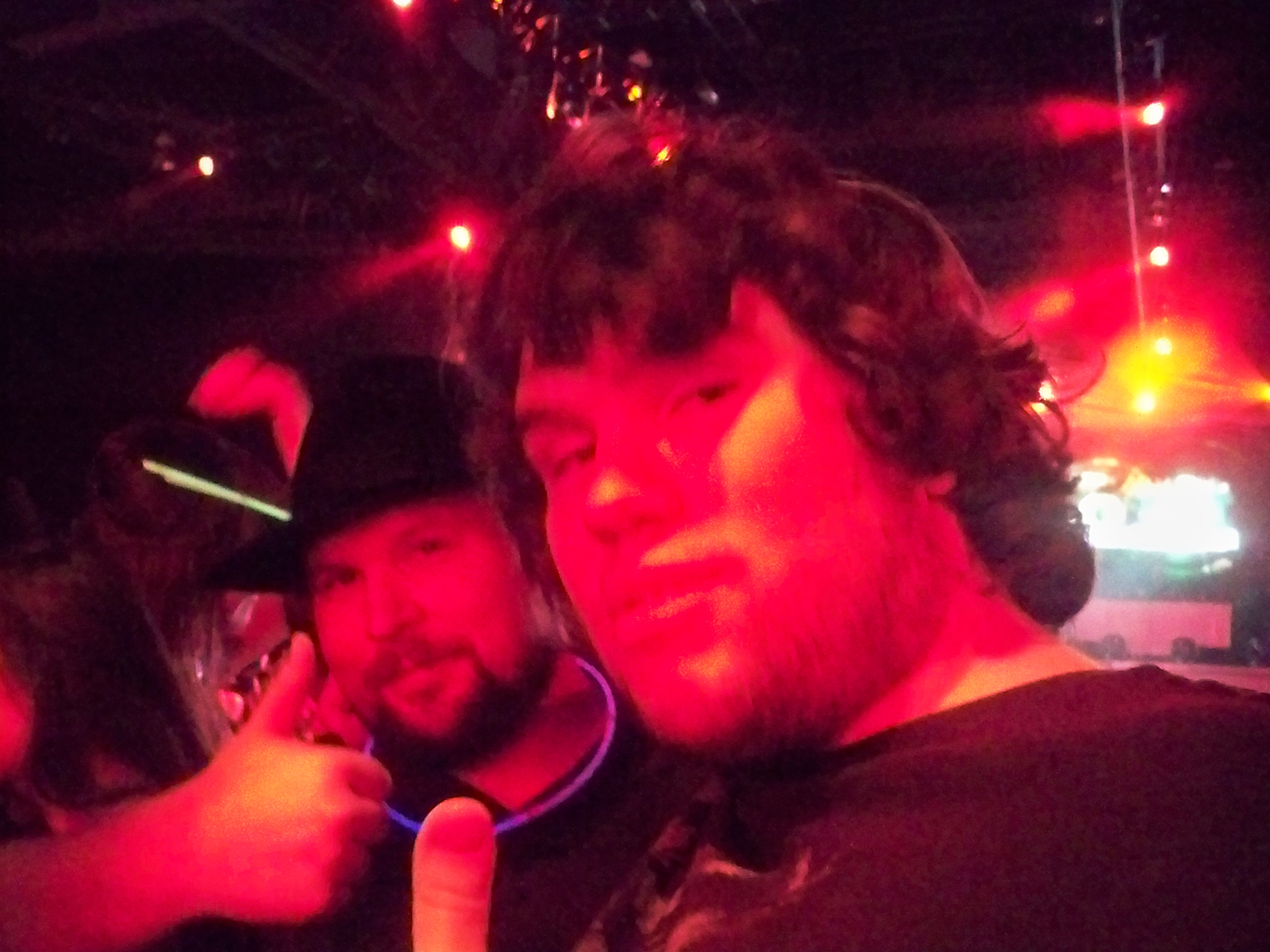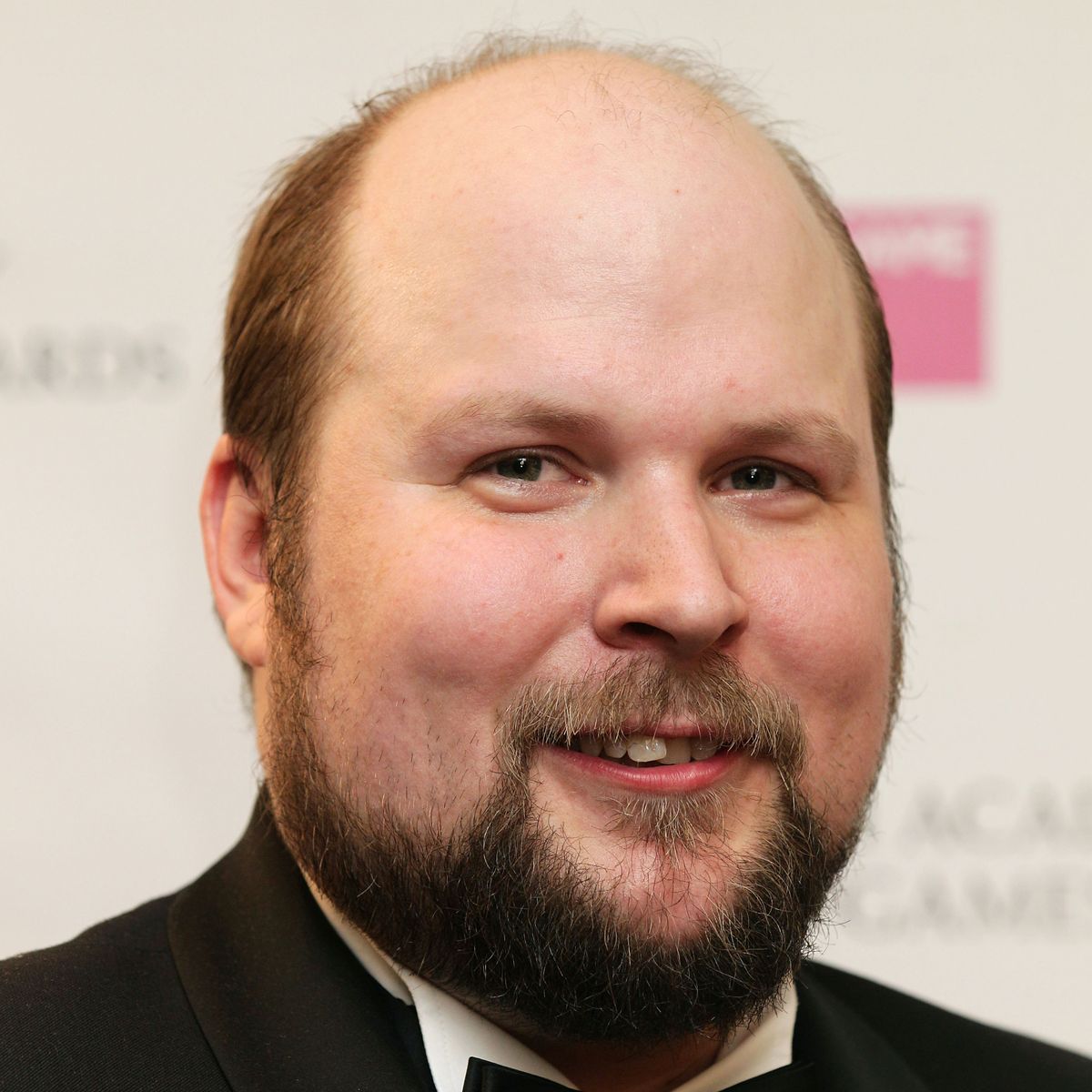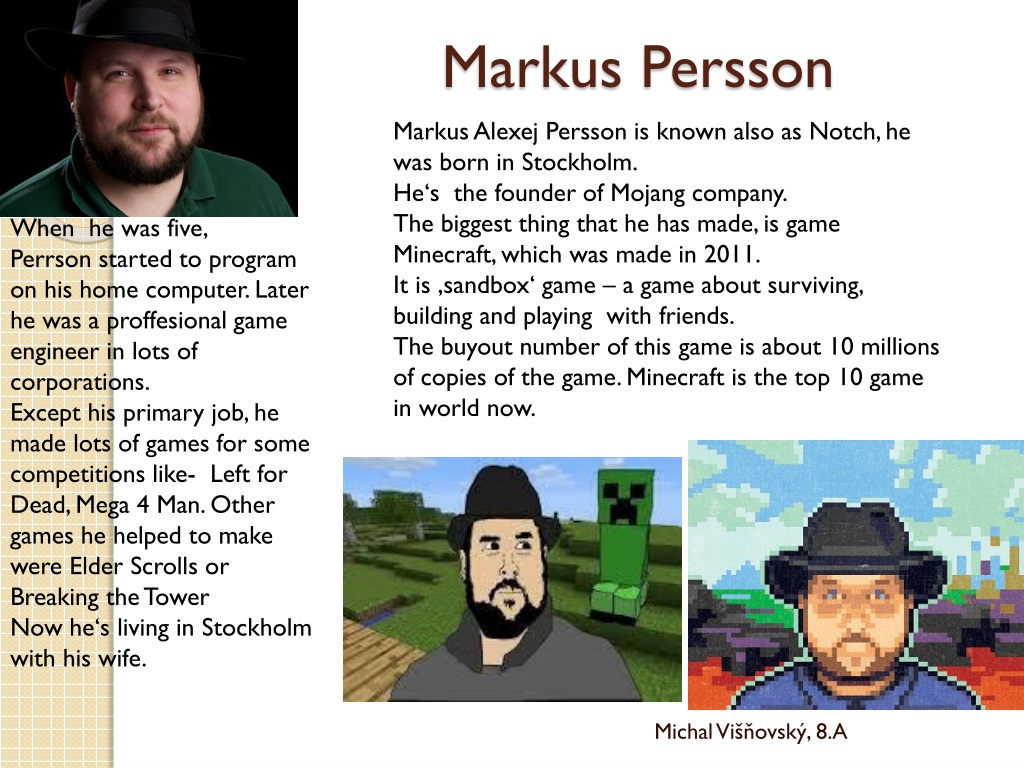Markus Persson: The Visionary Behind Minecraft
Markus Persson, the name that changed the gaming industry forever. If you’ve ever spent hours building castles, mining caves, or exploring endless worlds in Minecraft, you owe it all to this Swedish programmer. His creation, Minecraft, isn’t just a game; it’s a cultural phenomenon that has redefined how we think about creativity, exploration, and even education. So, buckle up, because we’re diving deep into the life, mind, and legacy of the man behind one of the most iconic games of our time.
You might be wondering, who exactly is Markus Persson? Well, he’s not your typical game developer. Unlike the big studios with massive budgets and teams of hundreds, Markus started Minecraft in his spare time. It was a passion project that grew into a global sensation, proving that sometimes the best ideas come from the simplest beginnings.
But why does Markus Persson matter today? In an era where gaming is more popular than ever, understanding the story of Minecraft’s creator gives us insight into the power of innovation and the impact of indie developers. This isn’t just about a game; it’s about the vision of a man who dared to dream differently.
Read also:Bolly4ucomin Your Ultimate Destination For Bollywood Entertainment
Let’s take a look at what makes Markus Persson such a fascinating figure in the world of gaming and beyond.
Biography of Markus Persson
Data Pribadi Markus Persson
Before we dive into the genius behind Minecraft, let’s get to know the man himself. Below is a quick overview of Markus Persson’s personal details:
| Full Name | Markus Alexej Persson |
|---|---|
| Date of Birth | June 1, 1979 |
| Place of Birth | Eslo, Sweden |
| Profession | Game Developer, Programmer, Entrepreneur |
| Net Worth | $2 billion+ (as of 2023) |
| Notable Work | Minecraft |
Markus Persson, or as he’s known in the gaming world, “Notch,” was born in Eslo, Sweden, on June 1, 1979. From a young age, he showed a keen interest in computers and programming, which would eventually lead him down the path to creating one of the most beloved games of all time.
The Early Years: A Passion for Programming
Growing up in Sweden during the late ‘80s and early ‘90s, Markus had access to a computer at a time when they were still relatively rare. His dad brought home an Commodore 128 when Markus was just seven years old, and that’s where his love for coding began. He started experimenting with BASIC, teaching himself how to create simple programs and games. By the time he was a teenager, Markus was already writing more complex software, laying the groundwork for his future career.
Interestingly, Markus didn’t follow a traditional route to becoming a game developer. After finishing high school, he worked various jobs, including stints as a web developer and a programmer for companies like King.com, where he worked on casual browser games. These experiences honed his skills but also left him yearning for something more creative and fulfilling.
It wasn’t until 2009 that Markus decided to take a leap of faith and focus on his passion project—Minecraft. What started as a side hustle quickly turned into a full-time obsession, and the rest, as they say, is history.
Read also:Hdmovies2com Your Ultimate Destination For Movie Bliss
The Birth of Minecraft: A Game That Changed Everything
In 2009, Markus Persson unveiled Minecraft to the world. At first, it was just a rough prototype, but the game’s simplicity and open-ended design struck a chord with players. Unlike most games of the time, Minecraft didn’t have a predefined storyline or objectives. Instead, it gave players the freedom to build, explore, and survive in a blocky, pixelated world.
Here’s what made Minecraft so special:
- Sandbox Gameplay: Players could do almost anything they wanted—build cities, dig tunnels, or simply wander around.
- Procedurally Generated Worlds: Every world was unique, ensuring endless possibilities and replayability.
- Creative Mode: A mode that allowed players to build without limits, making it perfect for architects and artists.
- Survival Mode: A challenging mode where players had to gather resources, fight monsters, and survive.
Minecraft quickly gained traction, thanks in part to its early access model, which allowed players to buy and play the game while it was still in development. This created a sense of community and collaboration between Markus and his players, who provided valuable feedback and suggestions.
The Success of Minecraft: From Indie Hit to Global Phenomenon
By 2011, Minecraft had become a massive success, selling millions of copies and earning critical acclaim. But Markus wasn’t done yet. In 2014, he sold Mojang, the company he founded to develop Minecraft, to Microsoft for a staggering $2.5 billion. At the time, many people wondered why he would sell such a successful game. Markus himself explained that he wanted to step away from the pressure and focus on new projects.
The sale of Minecraft to Microsoft ensured the game’s long-term survival and growth. Under Microsoft’s ownership, Minecraft expanded into new platforms, including consoles, mobile devices, and even virtual reality. It also became a staple in education, with schools around the world using Minecraft: Education Edition to teach subjects like history, science, and coding.
Today, Minecraft has over 140 million monthly active players, making it one of the most played games in the world. And it all started with Markus Persson’s vision.
Markus Persson’s Philosophy on Game Design
What sets Markus Persson apart from other game developers is his philosophy on game design. Unlike many games that focus on competition and high-stakes challenges, Markus believed in giving players the freedom to create and explore. He once said, “I want people to feel like they’re in control, like they’re the ones making the decisions, not me.”
This philosophy is evident in Minecraft’s design. The game doesn’t force players to follow a specific path or achieve certain goals. Instead, it encourages creativity, experimentation, and collaboration. It’s this approach that has made Minecraft so appealing to such a wide audience, from kids to adults, casual gamers to hardcore enthusiasts.
Markus also emphasizes the importance of simplicity. “Sometimes the best games are the ones that don’t try to do too much,” he said in an interview. This belief is reflected in Minecraft’s blocky graphics and straightforward mechanics, which some critics initially dismissed as “too simple.” But as it turns out, simplicity can be a powerful tool in game design.
Markus Persson’s Impact on the Gaming Industry
Markus Persson’s influence extends far beyond Minecraft. He has inspired a new generation of indie developers to pursue their passions and create games that challenge traditional norms. His success proved that you don’t need a huge team or a massive budget to make a great game. All you need is a good idea, a lot of hard work, and a willingness to take risks.
Moreover, Markus has been a vocal advocate for open-source software and community-driven development. He believes that sharing knowledge and resources can lead to better games and a stronger gaming community. This ethos has influenced countless developers and studios, encouraging them to adopt more collaborative and transparent practices.
And let’s not forget the cultural impact of Minecraft. The game has spawned books, movies, merchandise, and even theme parks. It has become a part of popular culture, influencing everything from fashion to education. All of this can be traced back to Markus Persson’s vision and determination.
Challenges and Controversies
Of course, no story of success is without its challenges. Markus Persson faced his fair share of controversies over the years. One of the biggest was the decision to sell Mojang to Microsoft, which sparked outrage among some fans who felt betrayed. Markus addressed these concerns in a blog post, explaining that the sale would ensure Minecraft’s future and allow him to focus on new projects.
Another challenge was dealing with the immense pressure that came with Minecraft’s success. In interviews, Markus has spoken candidly about the stress and burnout he experienced during the early days of the game’s development. It’s a reminder that behind every great success is often a lot of hard work and sacrifice.
Despite these challenges, Markus has remained humble and grounded. He continues to be involved in the gaming community, supporting indie developers and sharing his experiences with aspiring creators.
Markus Persson’s Future Projects
After selling Mojang, Markus Persson turned his attention to new ventures. He founded a company called Beekeeper Studio, where he continues to develop games and experiment with new ideas. One of his recent projects is a game called Scrolls, which combines elements of strategy, card games, and fantasy. While it hasn’t reached the same level of success as Minecraft, it showcases Markus’s continued passion for innovation and creativity.
Markus has also been involved in other tech projects, including investments in virtual reality and blockchain technology. He remains an active member of the gaming community, attending events, speaking at conferences, and sharing his insights with others.
As for the future, Markus has said that he’s always on the lookout for new ideas and opportunities. Whether he creates another game as groundbreaking as Minecraft remains to be seen, but one thing is certain: his impact on the gaming industry will be felt for years to come.
Why Markus Persson Matters Today
In a world where technology is evolving faster than ever, Markus Persson’s story serves as a powerful reminder of the importance of creativity, innovation, and community. He showed us that even the simplest ideas can lead to something extraordinary if you have the courage to pursue them.
Minecraft has become more than just a game; it’s a testament to the power of imagination and collaboration. It’s a platform that brings people together, inspires creativity, and fosters learning. And it all started with Markus Persson’s vision.
As we look to the future of gaming and technology, Markus’s legacy will continue to inspire developers, players, and creators around the world. His story is a testament to the fact that sometimes the best ideas come from the unlikeliest places.
Conclusion: The Legacy of Markus Persson
To sum it up, Markus Persson is more than just the creator of Minecraft; he’s a visionary who changed the gaming industry forever. From his humble beginnings as a programmer in Sweden to his role as one of the most influential figures in gaming, Markus has left an indelible mark on the world.
So, what can we learn from Markus’s story? First, that great ideas can come from anywhere. Second, that taking risks and following your passions can lead to incredible success. And third, that the power of community and collaboration can turn a simple game into a global phenomenon.
If you’ve enjoyed this article, feel free to leave a comment or share it with your friends. And if you’re a fan of Minecraft, take a moment to appreciate the man behind the game—the visionary who dared to dream differently.
Daftar Isi
- Biography of Markus Persson
- The Early Years: A Passion for Programming
- The Birth of Minecraft: A Game That Changed Everything
- The Success of Minecraft: From Indie Hit to Global Phenomenon
- Markus Persson’s Philosophy on Game Design
- Markus Persson’s Impact on the Gaming Industry
- Challenges and Controversies
- Markus Persson’s Future Projects
- Why Markus Persson Matters Today
- Conclusion: The Legacy of Markus Persson
Article Recommendations


